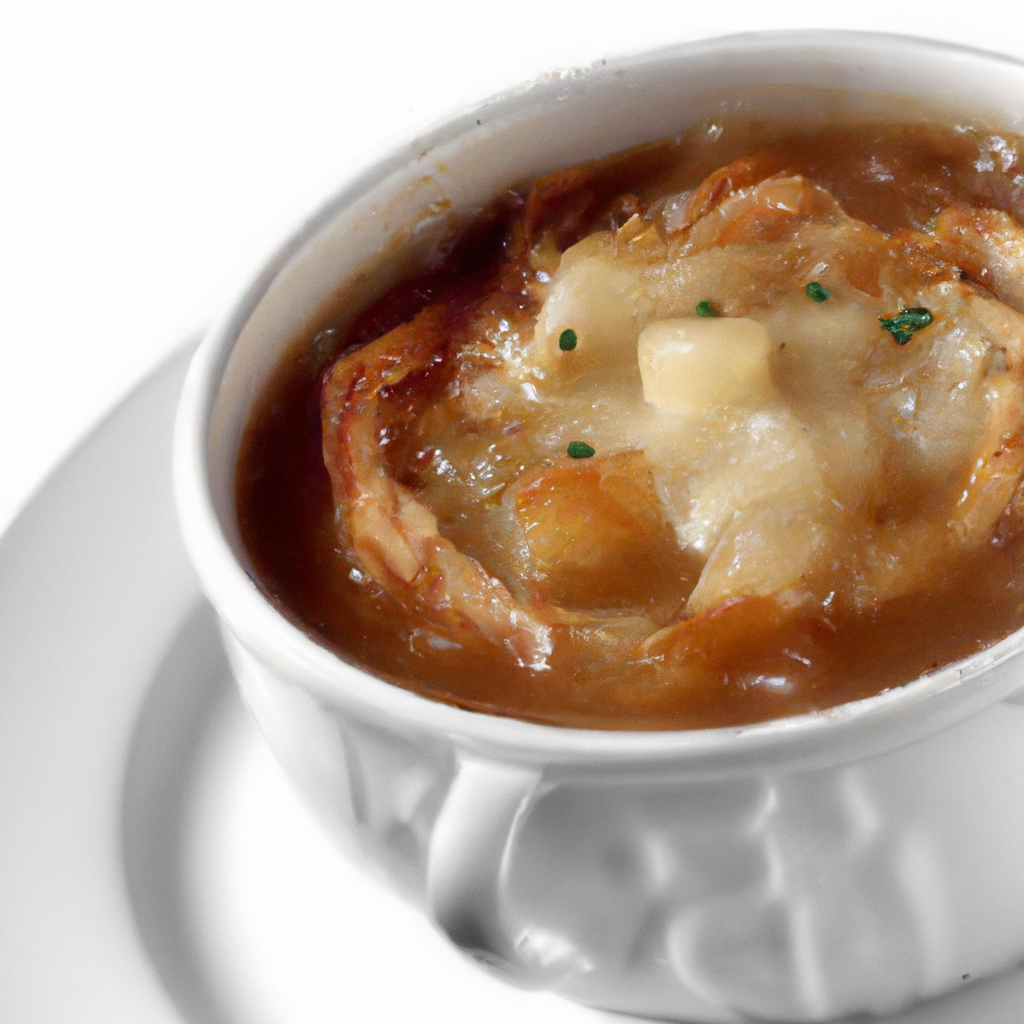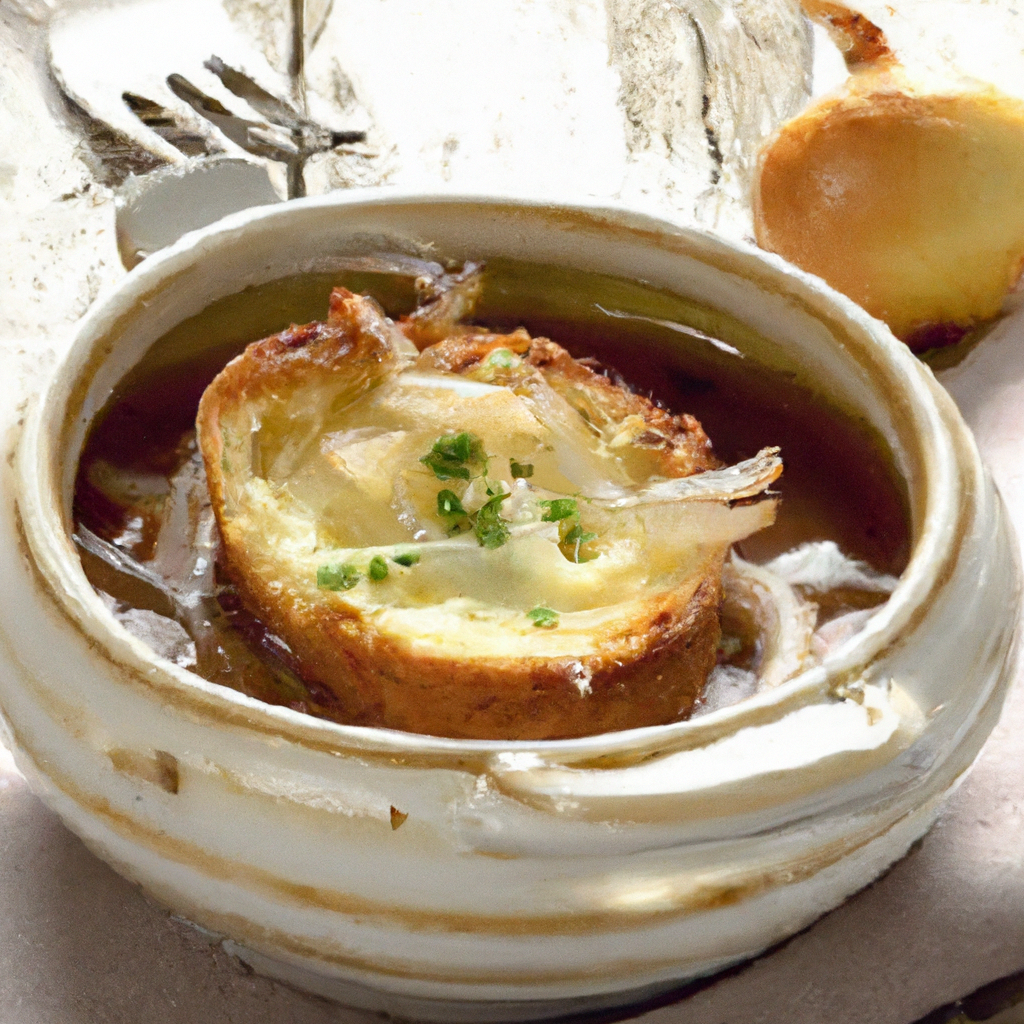Do you ever wonder about the origins of your favorite dishes? Well, let’s take a journey back in time and unravel the fascinating story behind the iconic French Onion Soup. Originating from 18th-century France, this hearty soup has stood the test of time and become a beloved culinary masterpiece. With its rich history and comforting flavors, it’s no wonder why French Onion Soup continues to warm our hearts and delight our taste buds. Get ready to discover the captivating tale of how this soup came to be, and brace yourself for a truly delicious adventure.
Ancient Origins
Early evidence of onion consumption
The roots of French onion soup can be traced back to ancient times, with early evidence showing that onions were consumed by various civilizations. Onions were highly valued by the Egyptians, who believed in their medicinal properties and even used them in religious rituals. The Greeks and Romans also recognized the versatility of onions and incorporated them into their cuisine.
Development of soup as a culinary tradition
As civilizations evolved, so did their culinary practices. The concept of soup started to take shape during the Middle Ages, with the introduction of cooking pots and the availability of a wider range of ingredients. Initially, soup was a simple concoction of water, vegetables, and meat, mainly used for nourishment. However, as time went on, soup began to be seen as a dish that could be flavored and seasoned to create more complex and satisfying flavors.
Medieval Period
Onion soup in monastic communities
During the medieval period, monastic communities played a crucial role in the development of onion soup. Onions were readily available and easy to grow, making them a staple ingredient in monastic gardens. Monks and nuns often relied on onions to add flavor to their meals, and onion soup became a popular dish within the confines of the monastery walls.
Rising popularity among commoners
As the Middle Ages progressed, onion soup started to gain popularity among the commoners of France. Onions were affordable and widely accessible, making them a common ingredient in the diets of the working class. Combined with the simple preparation and hearty nature of the dish, onion soup quickly became a favorite among the lower classes, providing nourishment and warmth during cold winters.

Influence of Louis XIV
Royal endorsement of onion soup
The rise of onion soup from a humble peasant dish to a renowned culinary delight can be attributed, in part, to the influence of Louis XIV, the Sun King. Fascinated by the flavors of onion soup, Louis XIV became a devoted enthusiast and promoter of the dish. His royal endorsement elevated onion soup’s status and brought it to the attention of the French nobility.
Refinement of the recipe
Louis XIV’s appreciation for onion soup prompted the royal chefs to refine the recipe, adding new ingredients and techniques to enhance its flavors. The addition of rich beef broth and the indulgent use of butter and herbs elevated the soup to a whole new level of decadence. The royal court’s patronage contributed to the growing reputation of onion soup as a luxurious and sophisticated dish.
The Revolution and Beyond
Onion soup as a symbol of resilience
During the French Revolution, onion soup took on a new significance as a symbol of resilience and solidarity. The simplicity and affordability of the dish made it a popular choice among the revolutionaries and the working class. As they fought for equality and freedom, onion soup became a reminder of their shared struggle and a source of comfort during challenging times.
Continued popularity and regional variations
In the aftermath of the Revolution, onion soup continued to be a beloved dish throughout France. Each region put its own twist on the recipe, incorporating local ingredients and culinary traditions. From the hearty “soupe à l’oignon gratinée” in Paris to the delicate “soupe de l’oignon de Mougins” in Provence, regional variations of onion soup showcased the diversity and creativity of French cuisine.

The Role of Onions
Cultural significance of onions in France
In France, onions hold a special place in the country’s food culture. Not only are they one of the most commonly used ingredients in French cuisine, but they also have deep cultural significance. Onions symbolize humility, strength, and resilience, and their incorporation in dishes like onion soup reflects the values and traditions deeply embedded in French society.
Onions as a staple ingredient
The versatility and flavor profile of onions make them a staple ingredient in French cooking. From the delicate sweetness of shallots to the pungent bite of red onions, different varieties of onions bring unique flavors and textures to dishes. Their ability to add depth and complexity to soups, stews, sauces, and countless other recipes has solidified their position as a fundamental building block of French cuisine.
Historical Recipes
Early written recipes of onion broth
While the exact origins of onion soup recipes are difficult to trace, written records from the 18th and 19th centuries provide glimpses into early versions of the dish. These recipes often featured simple preparations of onions simmered in water or broth, sometimes paired with bread or cheese. Over time, these basic recipes evolved and were adapted to include more complex flavors and techniques.
Transition to using onions as a prominent ingredient
As the popularity of onion soup grew, so did the significance of onions as a prominent ingredient in the dish. Instead of merely being a flavor enhancer, onions started to form the heart of the soup, providing body and character to the final product. This transition marked a pivotal moment in the evolution of onion soup and solidified its identity as a distinct and cherished culinary creation.

Iconic French Ingredients
Cheese: the essential gratiné
One of the defining features of French onion soup is the gratiné topping made with melted cheese. Traditionally, Gruyère cheese is used for its nutty flavor and its ability to create a luscious, golden crust. The combination of savory, caramelized onions and the oozy, gooey cheese makes the gratiné a quintessential component of this beloved dish.
Bread: the classic topping
Just as important as the cheese is the toasted bread that sits atop the soup before being covered with melted cheese. This bread, often a baguette, adds an essential textural element to the soup. Its crispy exterior and soft interior soak up the flavorful broth, creating a delightful contrast of textures with the tender onions and rich cheese.
Evolution of Preparation Techniques
Caramelizing onions for depth of flavor
One of the key techniques that transformed onion soup was the art of caramelizing onions. This process involves slowly cooking onions over low heat until they become golden brown, releasing their natural sugars and developing complex, sweet flavors. Caramelized onions bring a rich, robust taste to the soup and are responsible for its distinctive depth of flavor.
Simmering methods to enhance taste
Simmering the soup for an extended period allows the flavors to meld together, resulting in a deeply satisfying and comforting dish. The slow, gentle cooking process allows the onions, broth, and other ingredients to blend seamlessly, creating a harmonious symphony of flavors. This technique ensures that each spoonful of onion soup is packed with a delightful complexity that lingers on the palate.

Regional Variations
Onion soup in Provence
In the picturesque region of Provence, onion soup takes on a lighter and more delicate character. The addition of local herbs, such as thyme and lavender, adds a fragrant and floral note to the soup. Provencal onion soup often features the use of white wine, which further enhances the overall flavor profile and adds a touch of elegance to the dish.
Specialties from Lyon and Paris
Lyon and Paris, with their rich culinary traditions, have their own unique take on onion soup. Lyonnaise onion soup is known for its richness, often featuring the addition of beef bone marrow or fleur de sel, a type of coarse sea salt. Parisian onion soup, on the other hand, is characterized by its gratiné topping, which is typically thicker and more indulgent than other variations.
International Influence
Popularity and adaptation abroad
The fame of French onion soup extends far beyond the borders of France. Its rich history and delectable flavors have made it a beloved dish across the globe. In countries like the United States, Canada, and Australia, French onion soup has become a classic comfort food, often enjoyed during cold winter months. Its popularity has also led to various adaptations and interpretations, incorporating local ingredients and flavors.
Incorporation into different cuisines
French onion soup’s international influence can be seen in the way it has been incorporated into different cuisines. For example, in Mexican cuisine, a similar dish called “sopa de cebolla” is made with onions, beef broth, and cheese. In Japan, “onion gratin soup” is a popular fusion dish that combines the flavors of French onion soup with Japanese ingredients like miso and soy sauce. These adaptations showcase the versatility and adaptability of onion soup as a culinary masterpiece.
In conclusion, French onion soup’s journey from ancient origins to international fame is a testament to its enduring appeal. Its humble beginnings as a nourishing peasant dish transformed into a culinary masterpiece fit for kings and commoners alike. Whether enjoyed in a traditional Parisian bistro or reimagined in kitchens around the world, French onion soup remains a symbol of comfort, resilience, and the timeless flavors of French cuisine. So grab a spoon, savor the rich flavors, and let French onion soup transport you to a world of culinary delight.

